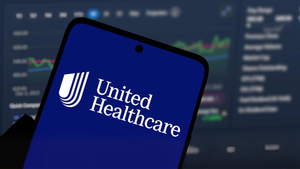
Off-price retail company Burlington Stores (NYSE: BURL) missed Wall Street’s revenue expectations in Q1 CY2025, but sales rose 6% year on year to $2.50 billion. Its non-GAAP EPS of $1.60 per share was 12% above analysts’ consensus estimates.
Is now the time to buy BURL? Find out in our full research report (it’s free).
Burlington (BURL) Q1 CY2025 Highlights:
- Revenue: $2.50 billion (6% year-on-year growth)
- Adjusted EPS: $1.60 vs analyst estimates of $1.43 (12% beat)
- Revenue Guidance for Q2 CY2025 is $2.61 billion at the midpoint, below analyst estimates of $2.65 billion
- Management reiterated its full-year Adjusted EPS guidance of $9 at the midpoint
- Operating Margin: 5.9%, in line with the same quarter last year
- Locations: 1,115 at quarter end, up from 1,021 in the same quarter last year
- Same-Store Sales were flat year on year (2% in the same quarter last year)
- Market Capitalization: $15.03 billion
StockStory’s Take
Burlington’s first quarter results were shaped by a combination of external headwinds and internal cost management. Management emphasized that February’s sales were negatively impacted by severe weather and delayed tax refunds, with CEO Michael O’Sullivan noting, “the quarter started off slowly.” As conditions normalized, sales trends improved in March and April, but comparable store sales were flat overall. Despite the sluggish top-line growth, Burlington delivered higher adjusted earnings, which management attributed to aggressive pursuit of margin and expense savings, as well as favorable timing between quarters. CFO Kristin Wolfe highlighted that the company benefited from “faster inventory turns” and strategic inventory purchases that positioned the business ahead of anticipated tariff impacts.
Looking forward, Burlington’s leadership reiterated its full-year adjusted EPS guidance but underscored heightened uncertainty surrounding tariffs and consumer spending. CEO Michael O’Sullivan explained that the volatility in U.S.-China tariffs could create both risks and opportunities, depending on merchandise supply and sourcing shifts. He stated, “We see both risks and opportunities in the months ahead, and we are managing our business accordingly.” Management also pointed to macroeconomic risks, including the potential for rising inflation and recessionary pressures, which could weigh on Burlington’s core customer. The company’s 2025 outlook is contingent on tariffs remaining at current rates and the impact of inflation on lower-income shoppers remaining modest.
Key Insights from Management’s Remarks
Management attributed Burlington’s Q1 margin outperformance to early cost-saving measures and flexible sourcing, while highlighting the complex and unpredictable impact of tariffs on both supply and consumer demand.
- Early margin and expense actions: In anticipation of potential tariff impacts, Burlington began aggressively targeting cost savings across its profit and loss statement at the start of the quarter, capturing benefits in supply chain efficiencies, store productivity, and other SG&A (selling, general, and administrative) expenses.
- Merchandise sourcing flexibility: The company leveraged its ability to source from thousands of vendors and shifted away from categories more exposed to Chinese imports when necessary. Management noted that Burlington directly imports a small portion of its products, allowing nimble responses to shifting tariff regimes.
- Reserve inventory strategy: Burlington significantly increased its reserve inventory—goods purchased ahead of tariff implementation and stored for future use. CFO Kristin Wolfe described these as “highly branded” items, which did not incur tariffs and are intended to be released during key selling seasons.
- Evolving store experience: Roughly half of Burlington’s locations have been converted to the Store Experience 2.0 layout, which management believes enhances customer engagement and supports the company’s value-focused marketing message. The rollout is expected to be completed by the end of 2026.
- New store pipeline strength: The company remains committed to opening 100 net new stores in 2025 and has added 46 former JOANN’s Fabrics locations to its 2026 pipeline, reflecting management’s optimism about market share expansion as competitors exit physical retail.
Drivers of Future Performance
Burlington’s outlook is driven by its ability to navigate tariff-related volatility, sustain cost discipline, and adapt to fluctuating consumer demand.
- Tariff and sourcing risks: Management warned that ongoing changes in U.S.-China tariffs could disrupt the flow of merchandise, impacting both supply and margins. The company’s ability to shift sourcing and manage inventory will be key to mitigating any negative effects if tariffs increase or remain unstable.
- Consumer sensitivity to inflation: The company’s core lower-income customer base is highly sensitive to inflation and changes in discretionary income. Management stated that a significant rise in inflation, possibly triggered by tariffs, could pressure sales trends even if Burlington maintains its own low prices.
- Store expansion and modernization: Burlington’s growth strategy relies on the continued rollout of new stores and the Store Experience 2.0 format. The timely opening and performance of new locations, including those acquired from JOANN’s, are expected to contribute to both revenue growth and market share gains.
Catalysts in Upcoming Quarters
In the coming quarters, the StockStory team will monitor (1) how Burlington manages tariff-driven supply chain volatility and its impact on merchandise margins, (2) the pace and performance of new store openings, especially those from the JOANN’s acquisition, and (3) shifts in consumer demand as inflation and macroeconomic pressures evolve. Execution on merchandising and cost initiatives will also be critical in this uncertain environment.
Burlington currently trades at a forward P/E ratio of 23.8×. Is the company at an inflection point that warrants a buy or sell? See for yourself in our full research report (it’s free).
Our Favorite Stocks Right Now
Donald Trump’s victory in the 2024 U.S. Presidential Election sent major indices to all-time highs, but stocks have retraced as investors debate the health of the economy and the potential impact of tariffs.
While this leaves much uncertainty around 2025, a few companies are poised for long-term gains regardless of the political or macroeconomic climate, like our Top 5 Growth Stocks for this month. This is a curated list of our High Quality stocks that have generated a market-beating return of 183% over the last five years (as of March 31st 2025).
Stocks that made our list in 2020 include now familiar names such as Nvidia (+1,545% between March 2020 and March 2025) as well as under-the-radar businesses like the once-micro-cap company Kadant (+351% five-year return). Find your next big winner with StockStory today.






